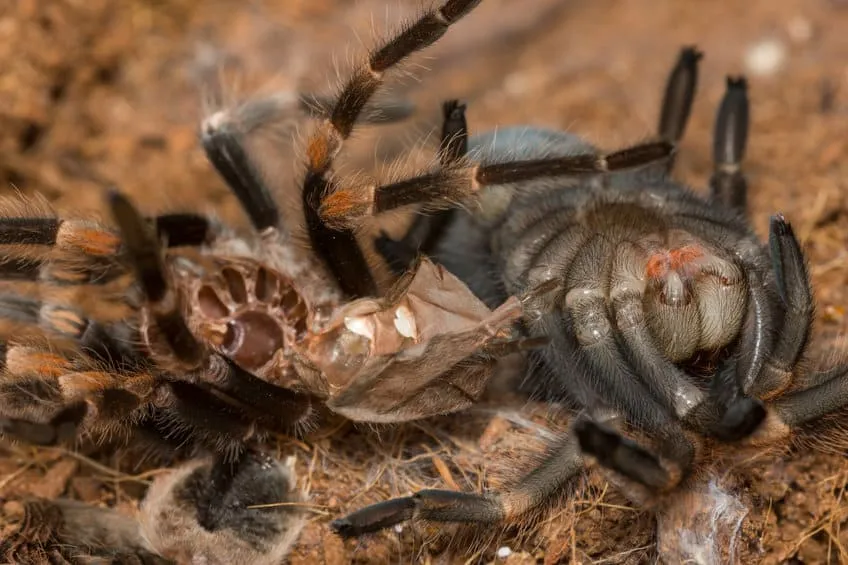What is Tarantula Molting
Tarantula molting is a natural and essential process for these fascinating creatures. It’s essentially how a tarantula grows and replaces its exoskeleton, the hard outer shell that protects its body. Unlike humans who grow from within, tarantulas shed their entire outer layer, including the lining of their gut and the fine hairs known as urticating hairs. This process allows them to increase in size, regenerate lost limbs, and replace damaged body parts. Molting is a sign of a healthy, growing tarantula, but it can be a stressful time, and understanding the process is crucial for proper care.
Understanding the Molting Process
The molting process is a remarkable feat of nature. It begins with the formation of a new, soft exoskeleton beneath the old one. The tarantula then absorbs fluids, causing the old exoskeleton to split open, usually along the carapace (the top of the cephalothorax) and the sides of the abdomen. The tarantula then wriggles free of its old shell, leaving behind a perfect, albeit empty, replica of itself. This new exoskeleton is initially very soft and vulnerable, gradually hardening over the following days or weeks. During this time, the tarantula is extremely vulnerable to injury and predation, highlighting the importance of a safe and stable environment.
Why Tarantulas Molt
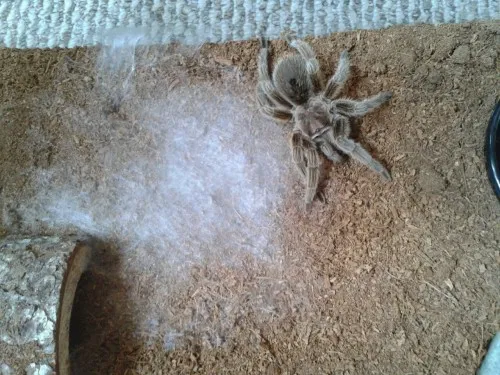
Molting serves several vital purposes for tarantulas. Firstly, it allows them to grow. Because their exoskeleton doesn’t expand, the tarantula must shed it to increase in size. Secondly, molting allows for regeneration. Tarantulas can regrow lost limbs during molting, a remarkable ability. Thirdly, molting helps rid the tarantula of parasites and other unwanted hitchhikers. Finally, the process replaces the old exoskeleton, which may be worn, damaged, or have accumulated debris. The frequency of molting decreases as a tarantula ages, with juveniles molting much more often than adults.
Signs Your Tarantula is About to Molt
Recognizing the signs that your tarantula is about to molt allows you to provide the best possible care during this vulnerable time. Several indicators can suggest an upcoming molt. The frequency of molting depends on the tarantula’s age, species, and feeding schedule. Younger tarantulas molt more frequently, sometimes every few months, while adults may only molt once a year or even less often. Observing these signs will help you anticipate the molting process and adjust your care accordingly.
Changes in Behavior
One of the most noticeable signs is a change in behavior. Your tarantula might become less active, spending more time in its burrow or hiding spot. They may also refuse food, sometimes for several weeks leading up to the molt. This is because they are preparing for the process and their internal systems are shifting. It’s important not to force-feed a tarantula that is refusing food, as this can stress the animal. If you observe your tarantula consistently refusing food, it might be a sign that molting is near, and you should take further steps to ensure the safety of your pet.
Appearance of the Abdomen
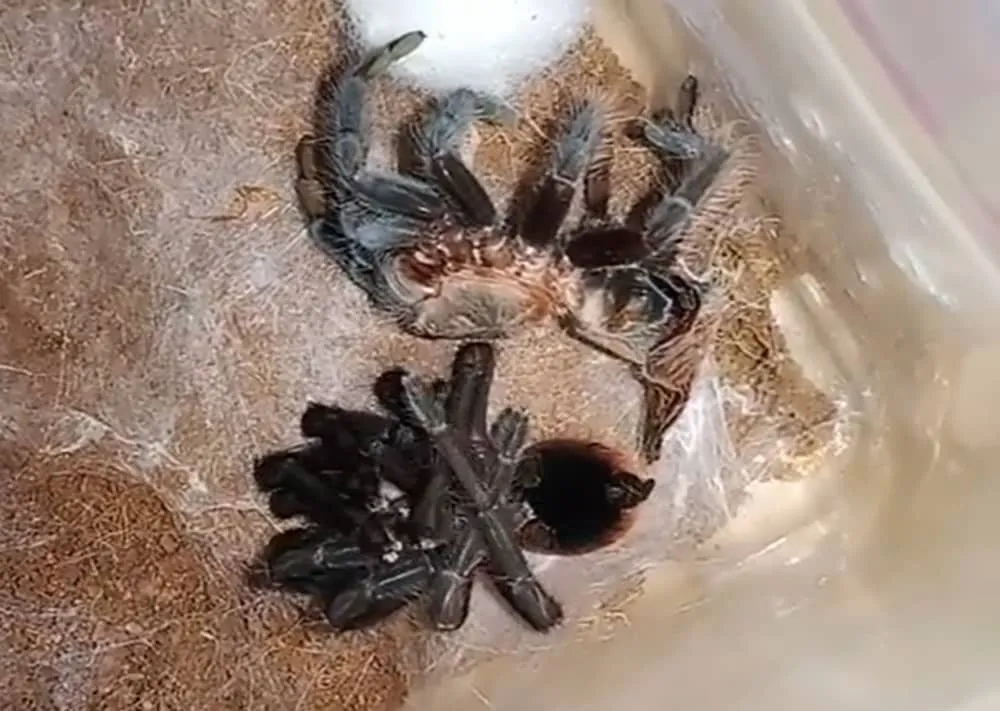
Another telltale sign is a darkening of the abdomen. The abdomen will often appear swollen and shiny, and the skin may look stretched. You might also notice the old exoskeleton beginning to separate from the new one underneath. The tarantula may also develop a bald spot on its abdomen, caused by the tarantula rubbing itself as it prepares for the molt. Be careful not to disturb the tarantula during this phase. Providing a stable environment can help the tarantula initiate the molting process without stress.
The Molting Position & What it Means
The molting position is a crucial indicator of the tarantula’s health and the progress of the molting process. Observing the position can also help understand how the tarantula is dealing with the process. While molting positions can vary slightly, certain postures are more common and indicate a successful molt is underway.
Molting on their Back
The most common and often successful molting position involves the tarantula lying on its back. In this position, the tarantula is able to use gravity to help shed its exoskeleton. The legs are usually stretched out, and the tarantula will work to push its body out of the old shell. This is a sign that the molt is proceeding normally, and it’s crucial not to disturb the tarantula during this time. Providing a quiet and stable environment will enable the tarantula to complete the molt safely.
Molting in a Burrow or Hiding Spot
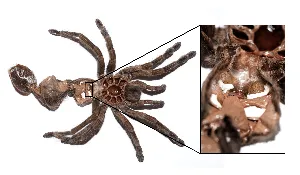
Some tarantulas, particularly those that burrow, may choose to molt within their burrow or a secure hiding spot. This is perfectly normal. It’s a way for the tarantula to feel safe and protected during the most vulnerable part of the process. Avoid disturbing the burrow or trying to move the tarantula. Provide a consistent environment without unnecessary handling or stress, which will allow the tarantula to complete the molt on its own time.
How to Care for a Tarantula During Molting
Caring for a tarantula during molting involves providing a stress-free environment that supports the process. A few key considerations can help ensure a successful molt. It is crucial to leave your tarantula alone as much as possible during this time. Even the most docile tarantulas can be startled and potentially injure themselves during this vulnerable period. Any disruption could cause the tarantula to abandon the molt and jeopardize its survival.
Maintaining a Safe Environment
Keep the enclosure in a quiet area, away from vibrations, bright lights, and excessive noise. Make sure the enclosure is secure and cannot be accessed by other pets or small children. Avoid handling the tarantula or attempting to feed it. Ensure that the enclosure has enough substrate for burrowing species to feel secure. Covering the enclosure partially can provide added security and privacy during this time. These steps will minimize stress and allow the tarantula to focus on molting.
Providing Proper Humidity
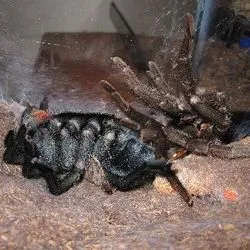
Maintaining the correct humidity level is essential for a successful molt. The humidity helps the tarantula to shed its old exoskeleton. Research the specific humidity requirements for your tarantula species. This can be achieved by misting the enclosure regularly, ensuring the substrate is slightly moist, and providing a water dish. Avoid over-misting, which can lead to mold growth. A hygrometer can help you monitor the humidity levels. Proper humidity aids in the molting process and ensures that the new exoskeleton hardens correctly.
What NOT to Do During Molting
There are several things to avoid during the molting process to prevent unnecessary stress or harm to your tarantula. It’s crucial to understand these don’ts to ensure the tarantula’s safety. It’s always better to err on the side of caution and allow the tarantula to complete the molt without intervention.
Feeding Your Tarantula
Do not attempt to feed your tarantula if you suspect it is molting or about to molt. A tarantula that is preparing to molt will often refuse food. Force-feeding can cause stress and injury. Leave the uneaten food items in the enclosure and dispose of them. Wait until the tarantula has completely finished molting and its new exoskeleton has hardened before offering food. A tarantula may not eat for several weeks before and after molting.
Handling Your Tarantula
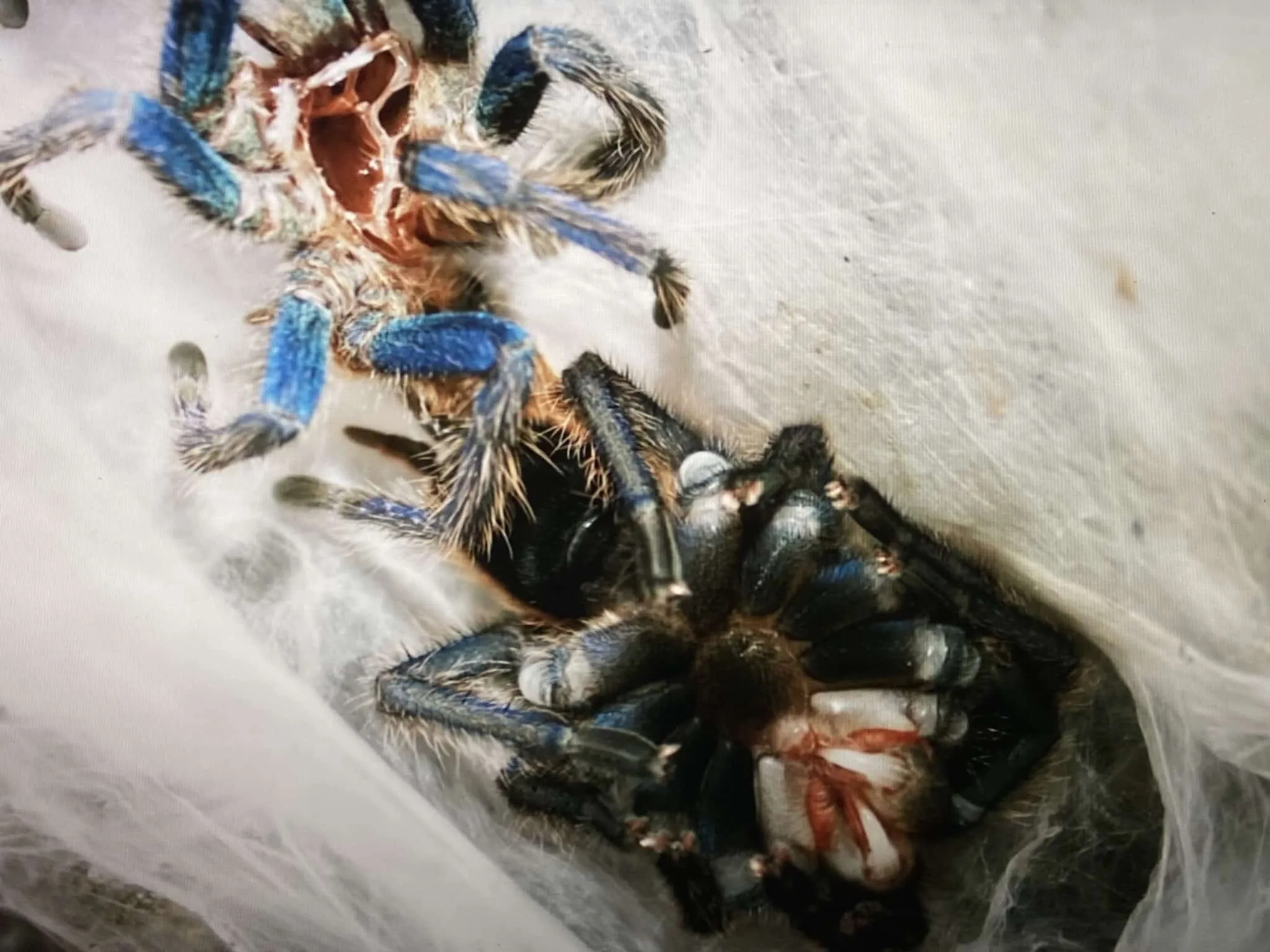
Avoid handling your tarantula during the molting process. The tarantula is extremely vulnerable during this time, and even gentle handling can cause injury. The new exoskeleton is soft and easily damaged. Additionally, handling can cause stress, potentially disrupting the molting process. Observe from a distance and allow the tarantula to molt in peace. Handling should be avoided for at least a week after molting.
Post-Molting Care
Once the molt is complete, the tarantula will be in a delicate state, so post-molting care is just as critical as the process itself. After shedding its old exoskeleton, the tarantula needs time to recover and fully harden its new shell. Providing the appropriate environment after molting will help ensure the tarantula’s health and well-being.
Waiting Period
Allow the tarantula ample time to harden its new exoskeleton. This can take anywhere from a few days to a couple of weeks, depending on the species and the size of the tarantula. Do not disturb the tarantula during this time. Ensure the enclosure remains stable and stress-free. Adequate humidity is necessary for the exoskeleton to harden correctly. Keep a close eye on the tarantula, looking for any signs of distress or issues.
First Meal After Molting
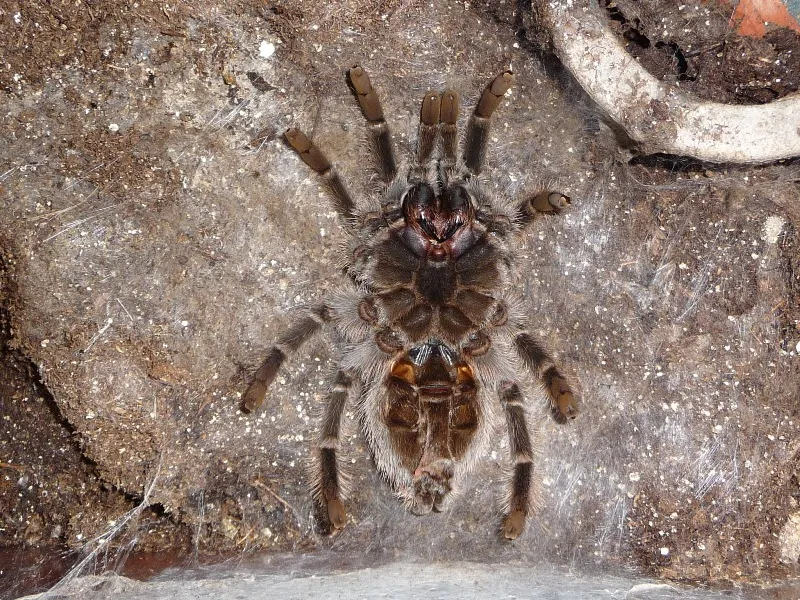
After the waiting period, you can offer your tarantula its first meal. Start with a small, appropriately sized insect. Avoid overfeeding, as the tarantula may not have fully regained its appetite. Monitor the tarantula to ensure it is eating and digesting its food properly. Provide a fresh water source. Remember that a newly molted tarantula can be ravenous, but it’s best to reintroduce food gradually. If your tarantula doesn’t show an interest in food, it may still be recovering.
Common Molting Problems
While most tarantula molts proceed without issues, problems can sometimes arise. Knowing these potential issues and how to respond can help you provide the best possible care. These issues can often be traced back to environmental factors or pre-existing health conditions. Recognizing the signs of a difficult molt can help to save your pet.
Failed Molts
Failed molts are a serious concern. This is when the tarantula is unable to successfully shed its old exoskeleton. This can be due to various reasons, including low humidity, poor health, or injuries. Signs of a failed molt include the tarantula remaining stuck in its old shell, or the new exoskeleton not fully emerging. If you suspect a failed molt, contact a veterinarian or experienced tarantula keeper. They can assess the situation and provide guidance on what to do. Unfortunately, there is often little that can be done to save a tarantula that cannot complete a molt.
Dehydration
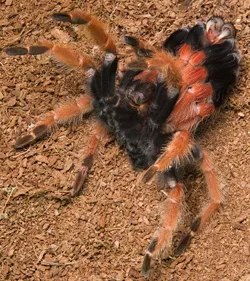
Dehydration can sometimes contribute to molting problems. A dehydrated tarantula may have difficulty shedding its old exoskeleton. Symptoms include a wrinkled or shriveled appearance. Ensure that your tarantula has access to fresh water at all times. Maintaining the correct humidity levels is essential for preventing dehydration. If your tarantula shows signs of dehydration, it may be necessary to provide supplemental hydration through misting or by adding a water source within the enclosure.
Conclusion
Tarantula molting is a fascinating and vital process, and understanding it is essential for responsible pet ownership. By recognizing the signs of an upcoming molt, providing a safe environment, and avoiding unnecessary interventions, you can help your tarantula molt successfully and live a long, healthy life. Always remember to research your specific tarantula species, as care requirements may vary. With proper care, you can witness this amazing natural phenomenon and enjoy the unique beauty of your tarantula.
